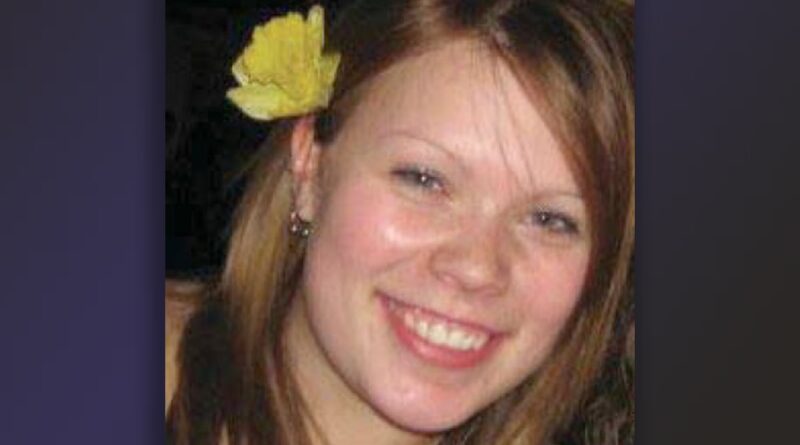Madison Scott Disappearance at Hogsback Lake in British Columbia Canada
Madison “Maddy” Geraldine Scott’s disappearance on May 28, 2011, from Hogsback Lake near Vanderhoof, British Columbia, captivated the nation and left a community searching for answers. Her case, marked by extensive search efforts, community solidarity, and enduring mystery, finally saw a resolution in May 2023 with the discovery of her remains. This article delves into the intricate details surrounding Madison’s life, her sudden disappearance, the exhaustive search operations, the community’s unwavering support, and the eventual discovery that brought closure to a 12-year-long enigma.
Early Life and Background
Born on April 29, 1991, Madison Scott was the middle child of Eldon and Dawn Scott, with an older brother, Ben, and a younger sister, Georgia. Growing up in the close-knit town of Vanderhoof, Madison was known for her vivacious and adventurous spirit. She had a deep passion for outdoor activities such as dirt biking, horseback riding, and team sports, embodying the essence of an energetic and outgoing individual. Her brother, Ben, fondly recalled that Madison was equally comfortable in a dress as she was in work coveralls, highlighting her versatile and approachable nature. After graduating from Nechako Valley Secondary School in 2009, Madison pursued a career as an apprentice heavy-duty mechanic in the logging industry, working alongside her father. This choice reflected her determination and willingness to engage in demanding professions traditionally dominated by men.
The Fateful Night at Hogsback Lake
On the evening of May 27, 2011, Madison attended a birthday party at Hogsback Lake, a popular recreational area approximately 25 kilometers southeast of Vanderhoof. She arrived at the campsite in her white 1990 Ford F-150 pickup truck, accompanied by her friend Jordi Bolduc. The gathering was a celebration among friends, featuring camping and socializing by the lake. As the night progressed, a physical altercation occurred around midnight, prompting Jordi to leave the party with her boyfriend. Madison, having settled into her tent for the night, chose to stay behind. This decision marked the last confirmed interaction anyone had with her. The following morning, Jordi returned to the campsite to retrieve her belongings and noticed Madison’s tent unzipped, with her sleeping bag pushed to the side. However, Madison was nowhere to be found. Assuming she had left earlier, Jordi did not raise immediate concern. It wasn’t until May 29, when Madison failed to return home and missed a family event, that her parents grew alarmed. They visited Hogsback Lake and discovered her abandoned campsite, with her locked pickup truck and flattened tent still present. Personal items of value, including unopened liquor, gasoline, motorbike equipment, a camera, and her purse, were found at the site, but her iPhone 4 and a set of keys were missing. Recognizing the gravity of the situation, they reported her disappearance to the Royal Canadian Mounted Police (RCMP).
Extensive Search Efforts
The RCMP launched an extensive search operation encompassing the lake, surrounding forests, and nearby areas. Search teams utilized helicopters equipped with infrared cameras, divers, cadaver dogs, and conducted ground searches by foot, horseback, and all-terrain vehicles. Despite these exhaustive efforts, no significant clues emerged to indicate Madison’s whereabouts. The lack of evidence led investigators to suspect foul play early in the investigation. The search efforts were unprecedented in scale, involving various specialized units and community volunteers. Helicopters conducted aerial searches using infrared technology to detect heat signatures, while divers scoured the depths of Hogsback Lake. Cadaver dogs were deployed to sniff out any trace of human remains, and ground searches covered vast expanses of challenging terrain. Despite these comprehensive efforts, Madison remained missing, deepening the mystery surrounding her disappearance.
Community Response and Awareness Campaigns
Madison’s disappearance deeply affected the Vanderhoof community. In response, family, friends, and volunteers organized awareness campaigns to keep her case in the public eye. They distributed posters, maintained a dedicated Facebook group titled “Justice for Maddy,” and held annual events like poker rides to raise awareness and funds for the search efforts. A reward of $100,000 was offered for information leading to an arrest, reflecting the community’s commitment to finding Madison and seeking justice. The community’s efforts extended beyond local initiatives. Media outlets covered Madison’s story extensively, and her case was featured in various true crime podcasts and documentaries. These platforms helped maintain public interest and encouraged individuals with information to come forward. The family’s unwavering determination and the community’s solidarity exemplified the profound impact Madison’s disappearance had on those around her.
The Discovery of Madison’s Remains
After 12 years of uncertainty, in May 2023, the RCMP announced that Madison’s remains had been discovered on a rural property east of Vanderhoof. The identification brought a somber resolution to the long-standing mystery of her disappearance. Despite this development, the investigation remains active, with authorities seeking new information to understand the circumstances surrounding her death. The discovery of Madison’s remains marked a pivotal moment in the case, providing some closure to her family and the community. However, many questions remain unanswered. The RCMP continues to investigate the circumstances of her disappearance and death, urging anyone with information to come forward. The Scott family remains steadfast in their pursuit of justice, emphasizing the importance of community support and vigilance.
Reflection on the Highway of Tears
Madison’s case has often been discussed in the context of the “Highway of Tears,” a term used to describe a stretch of Highway 16 in British Columbia where numerous women, many of Indigenous descent, have disappeared or been found murdered. While Madison’s disappearance shares similarities with these cases, it does not officially fall under the Highway of Tears classification due to differing criteria. Nonetheless, her case highlights the broader issues of safety and justice for missing and murdered women in the region. The Highway of Tears has been a focal point for discussions on systemic issues related to violence against women,
Discover more from City Towner
Subscribe to get the latest posts sent to your email.




